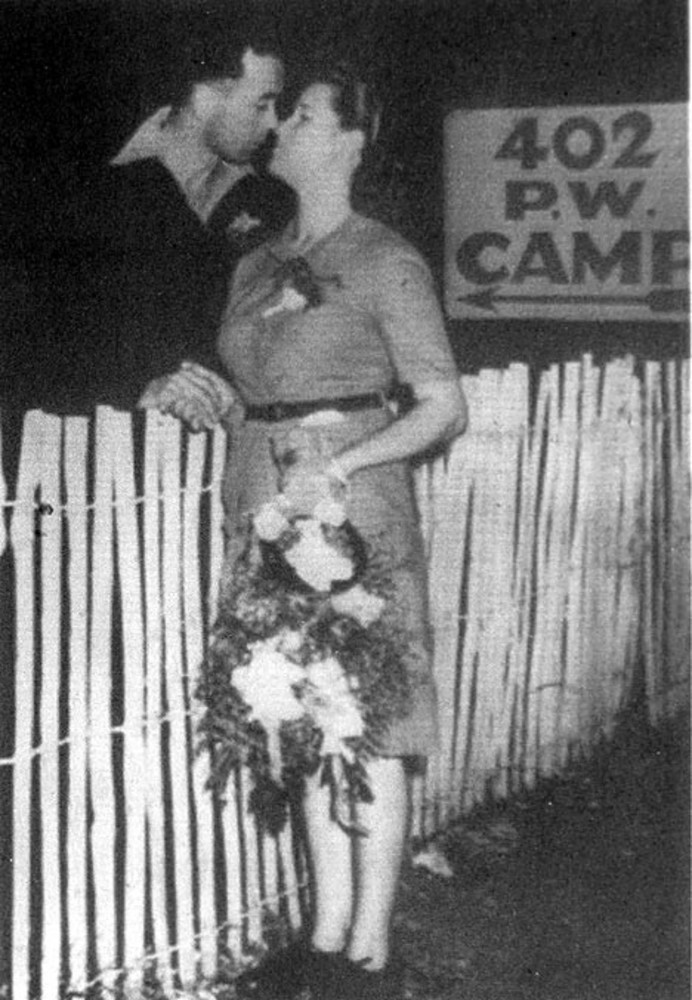Stories of War. Stories of friendship.
The 20th century has been torn apart by the burden of misery and destruction caused by two World Wars. However, valuable lessons can be learnt from history: even in situations dominated by pain and desolation, faith can unite men - whether they be civilians or soldiers, and provide a beacon to light up their souls, despite diversity and circumstance.This imposing manifestation of faith wasn’t an isolated phenomenon experienced by the Italian POWs who had been transported to Scotland. 1000 kilometres away from the Orkneys, another 1200 Italians, captured by the British in Libya and Tunisia, had been transported to Henllan in Wales. They too, in similar circumstances, felt a deep need to find comfort in faith which, independently from the prisoners in the Orkney, Islands, led them to build a similar expression of faith. The prisoners in Wales sacrificed one of their dormitories (another Nissen hut ) to turn it into a sacred place. As in the Orkneys, the building materials were obtained with great difficulty and adapted to uses very different from usual. For example, the beautiful fresco of the Last Supper, created by the prisoner Mario Ferlito, was painted using pigments extracted from carrots, berries, tea leaves and even onion skins.
The above film, in Welsh language, is the only film abailable showing the Italian Chapel of Henllan - presently in a poor state of conservation
One thing which binds the two experiences of the prisoners in Scotland and in Wales is expressed in a sentence which is simple but crammed with meaning:
“This is the house of God and the door to Heaven”.
This message, carved on the entrance to the Welsh chapel, seems to be urging man to ask himself what values he must aspire to in life. An innate sense of solidarity and equality, even in times of war can be evoked by looking up at the heavens, when communal understanding gives us strength and enemies can find themselves praying side by side.
These two chapels are a tangible symbol of a heritage the Italians left to the British people which is not only material but also spiritual. On the other hand, Stories of Friendship, the photographic exhibition organised by YOUMANTY, is an equally fascinating tribute, dedicated to the heritage left by the British in Italy during the Second World War.
More than one hundred photographs from the archives of The Imperial War Museum are an impressive testimony that even in times of great sacrifice, such as war, humanity and its most universal values transcend any cultural or linguistic difference. Stories of Friendship presents meaningful and emotionally charged fragments of everyday life, set amongst the larger framework of encounters between the local Italian population and the British soldiers during their time in Italy from 1943-1945. They are, indeed, stories of friendship, but also stories of love and events which have transcended culture, social status and uniforms. As a result, the region of Puglia, which had a notable role in the events which led to the birth of the Italian Republic, finds herself closely affiliated to the United Kingdom thanks to the ties which the war had powerfully shaped.
The exhibition which is the result of extensive research and planning by YOUMANTY and financed by Regione Puglia and GAL Puglia, aims to be a valuable portrayal of brotherhood and solidarity. This vision of war does not focus on winners and losers but wholeheartedly embraces those testimonies of friendship and solidarity which took place during some of the darkest times in our history.
Stories of Friendship was showcased at the Museum of the Order of St John from 21/07/2014 to 29/08/2014
The above article was researched and written by Mila Kemp, Raffaele Disanto, Pamela Villani, Francesca Rizzo and Annette Murphy.



